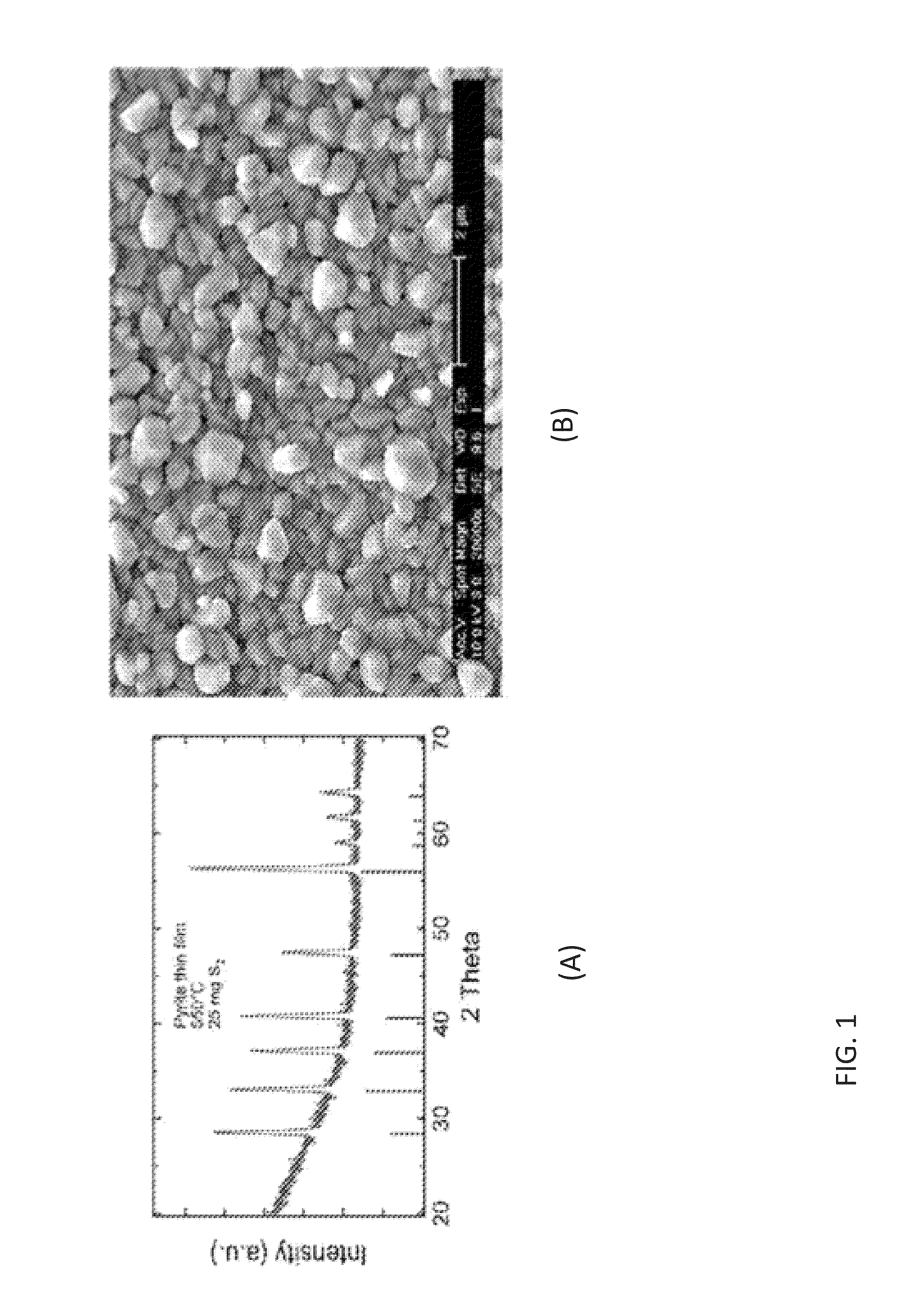Iron pyrite thin films from molecular inks
a technology of iron pyrite and molecular ink, which is applied in the field of solar cells and iron pyrite thin film solar cell devices, can solve the problems of limited market share and societal impact of cdte and cigs, and the inability to meet the large increase in energy demand by existing carbon-based technologies without further destabilizing the climate, and achieve the effect of 0.3 tws or less of total solar conversion capacity for cdte and
- Summary
- Abstract
- Description
- Claims
- Application Information
AI Technical Summary
Benefits of technology
Problems solved by technology
Method used
Image
Examples
Embodiment Construction
[0037]The embodiments provided herein are directed to systems and methods for fabricating pyrite thin films from molecular inks. A process is provided that comprises dissolving simple iron-bearing and sulfur-bearing molecules in an appropriate solvent and then depositing the solution onto an appropriate substrate using one of several methods (roll-to-roll coating, spraying, spin coating, etc.), resulting in a solid film consisting of the molecules. These molecular precursor films are then heated to 200-600° C. in the presence of sulfur-bearing gases (e.g., S2, H2S) to convert the molecular films into films of crystalline iron pyrite (FeS2). This approach offers the following advantages compared to gas-phase deposition and other solution-phase approaches:[0038]Simple and rapid deposition over large areas.[0039]Excellent control of film composition.[0040]Superior film uniformity.[0041]Simple doping and alloying.[0042]Low toxicity.[0043]Fairly low temperature.
[0044]Several solution che...
PUM
 Login to View More
Login to View More Abstract
Description
Claims
Application Information
 Login to View More
Login to View More - R&D
- Intellectual Property
- Life Sciences
- Materials
- Tech Scout
- Unparalleled Data Quality
- Higher Quality Content
- 60% Fewer Hallucinations
Browse by: Latest US Patents, China's latest patents, Technical Efficacy Thesaurus, Application Domain, Technology Topic, Popular Technical Reports.
© 2025 PatSnap. All rights reserved.Legal|Privacy policy|Modern Slavery Act Transparency Statement|Sitemap|About US| Contact US: help@patsnap.com



